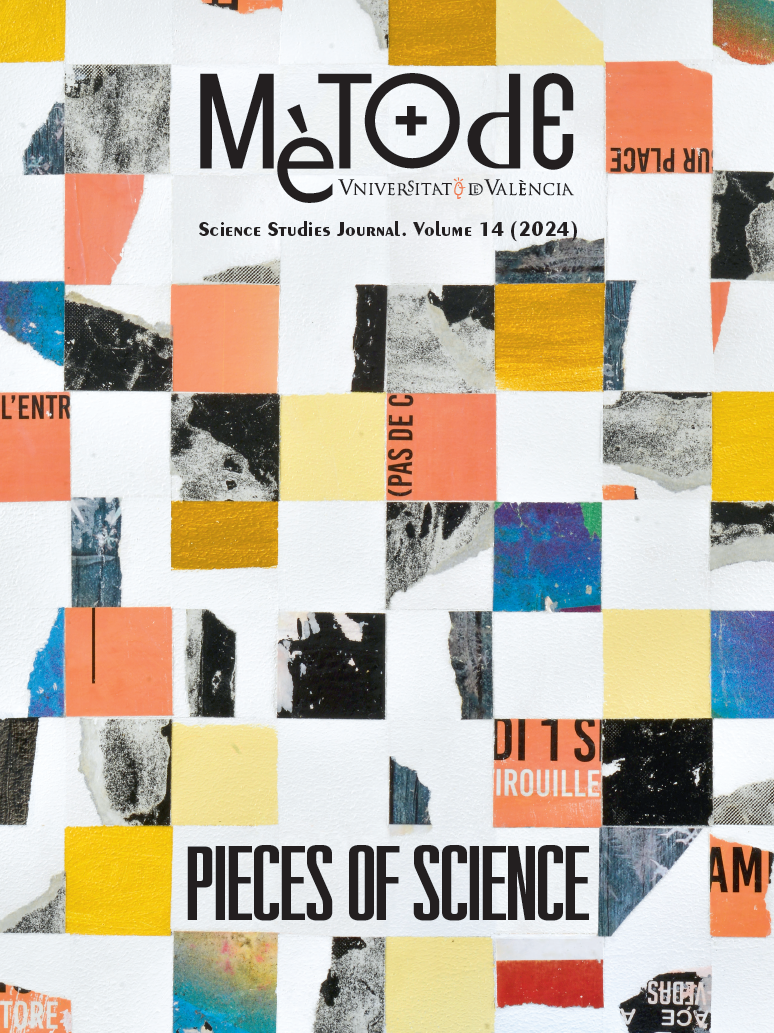Let science be told: A review of ideas for storytelling in science communication
DOI:
https://doi.org/10.7203/metode.14.26522Keywords:
storytelling, science communication, narrative, science journalism, emotions Abstract
Abstract
There is a rich literature on storytelling in public science communication, mostly advancing the premise that it helps in telling science to the public. We present here a summary of results from a review of ideas on the subject guided by a set of questions about goals, techniques, and research. We found no consensus on the notion of what is a story, yet some useful approximations emerged. There are various goals driving the use of storytelling to communicate science, from engaging to creating emotions to favouring understanding. The structure of the stories appeared as a crucial element, and three types of structures are dominant. As a field in evolution, there are not many empirical studies, but the few we found appear promising. We conclude that there is ample opportunity for discussion and research regarding emotions, persuasion, understanding and innovation in the use of narrative concepts and techniques to better let the science be told.
 Downloads
Downloads
 References
References
Brounéus, F., Lindholm, M., & Bohlin, G. (2019). Telling it straight – a focus group study on narratives affecting public confidence in science. JCOM: Journal of Science Communication, 18(05), A03. https://doi.org/10.22323/2.18050203
Cormick, C. (2019). Who doesn’t love a good story? – What neuroscience tells about how we respond to narratives. JCOM: Journal of Science Communication, 18(05), Y01. https://doi.org/10.22323/2.18050401
Crúz-Mena, J. (2016). El placer de ser contagioso. In D. Golombek & J. Nepote (Coords.), Instrucciones para contagiar la ciencia (pp. 105–111). Editorial Universidad de Guadalajara.
Dahlstrom, M. F. (2010). The role of causality in information acceptance in narratives: An example from science communication. Communication Research, 37(6), 857–875. https://doi.org/10.1177/0093650210362683
Dahlstrom, M. F. (2014). Using narratives and storytelling to communicate science with nonexpert audiences. Proceedings of the National Academy of Sciences of the United States of America, 111(supplement_4), 13614–13620. https://doi.org/10.1073/pnas.1320645111
Dahlstrom, M. F., & Scheufele, D. A. (2018). (Escaping) the paradox of scientific storytelling. PLOS Biology, 16(10), e2006720. https://doi.org/10.1371/journal.pbio.2006720
Davies, S. R., Halpern, M., Horst, M., Kirby, D., & Lewenstein, B. (2019). Science stories as culture: Experience, identity, narrative and emotion in public communication of science. JCOM: Journal of Science Communication, 18(05), A01. https://doi.org/10.22323/2.18050201
ElShafie, S. J. (2018). Making science meaningful for broad audiences through stories. Integrative and Comparative Biology, 58(6), 1213–1223. https://doi.org/10.1093/icb/icy103
Finkler, W., & León, B. (2019). The power of storytelling and video: A visual rhetoric for science communication. JCOM: Journal of Science Communication, 18(05), A02. https://doi.org/10.22323/2.18050202
Green, S., Grorud-Colvert, K., & Mannix, H. (2018). Uniting science and stories: Perspectives on the value of storytelling for communicating science. FACETS, 3(1), 164–173. https://doi.org/10.1139/facets-2016-0079
Halverson, J. R. (2011, 8 December). Why story is not narrative. Center for Strategic Communication. Arizona State University. https://csc.asu.edu/2011/12/08/why-story-is-not-narrative/
Joubert, M., Davis, L., & Metcalfe, J. (2019). Storytelling: The soul of science communication. JCOM: Journal of Science Communication, 18(05), E. https://doi.org/10.22323/2.18050501
Martin, K., Davis, L., & Sandretto, S. (2019). Students as storytellers: Mobile-filmmaking to improve student engagement in school science. JCOM: Journal of Science Communication, 18(05), A04. https://doi.org/10.22323/2.18050204
Martinez-Conde, S., & Macknik, S. L. (2017). Finding the plot in science storytelling in hopes of enhancing science communication. Proceedings of the National Academy of Sciences of the United States of America, 114(31), 8127–8129. https://doi.org/10.1073/pnas.1711790114
Negrete, A., & Lartigue, C. (2010). The science of telling stories: Evaluating science communication via narratives (RIRC method). Journal of Media and Communication Studies, 2(4), 98–110. https://doi.org/10.5897/JMCS.9000080
Onions, C. T., Friedrichsen, G. W. S., & Burchfield, R. W. (1996). The Oxford dictionary of English etymology. Oxford University Press.
Padian, K. (2018). Narrative and “anti-narrative” in science: How scientists tell stories, and don’t. Integrative and Comparative Biology, 58(6), 1224–1234. https://doi.org/10.1093/icb/icy038
Quoteresearch, A. (2017, 27 December). The plural of anecdote is not data – Quote investigator®. https://quoteinvestigator.com/2017/12/27/plural/#f+17637+1+2
Ribó, I. (2019). Prose fiction an introduction to the semiotics of narrative. Open Book Publishers. https://doi.org/10.11647/OBP.0187
Riedlinger, M., Massarani, L., Joubert, M., Baram-Tsabari, A., Entradas, M., & Metcalfe, J. (2019). Telling stories in science communication: Case studies of scholar-practitioner collaboration. JCOM: Journal of Science Communication, 18(05), N01. https://doi.org/10.22323/2.18050801
San Cornelio, G., & Roig Telo, A. (2022). Storytelling, social media and life stories. BiD: Textos Universitaris de Biblioteconomia i Documentació, 48. https://doi.org/10.1344/bid2022.48.14
Vanoost, M. (2013). Defining narrative journalism through the concept of plot. Diegesis, 2(2), 77–97. https://www.diegesis.uni-wuppertal.de
Downloads
Published
How to Cite
-
Abstract571
-
PDF304
Issue
Section
License
![]()
All the documents in the OJS platform are open access and property of their respective authors.
Authors publishing in the journal agree to the following terms:
- Authors keep the rights and guarantee Metode Science Studies Journal the right to be the first publication of the document, licensed under a Creative Commons Attribution-NonCommercial-NoDerivatives 4.0 International License that allows others to share the work with an acknowledgement of authorship and publication in the journal.
- Authors are allowed and encouraged to spread their work through electronic means using personal or institutional websites (institutional open archives, personal websites or professional and academic networks profiles) once the text has been published.





